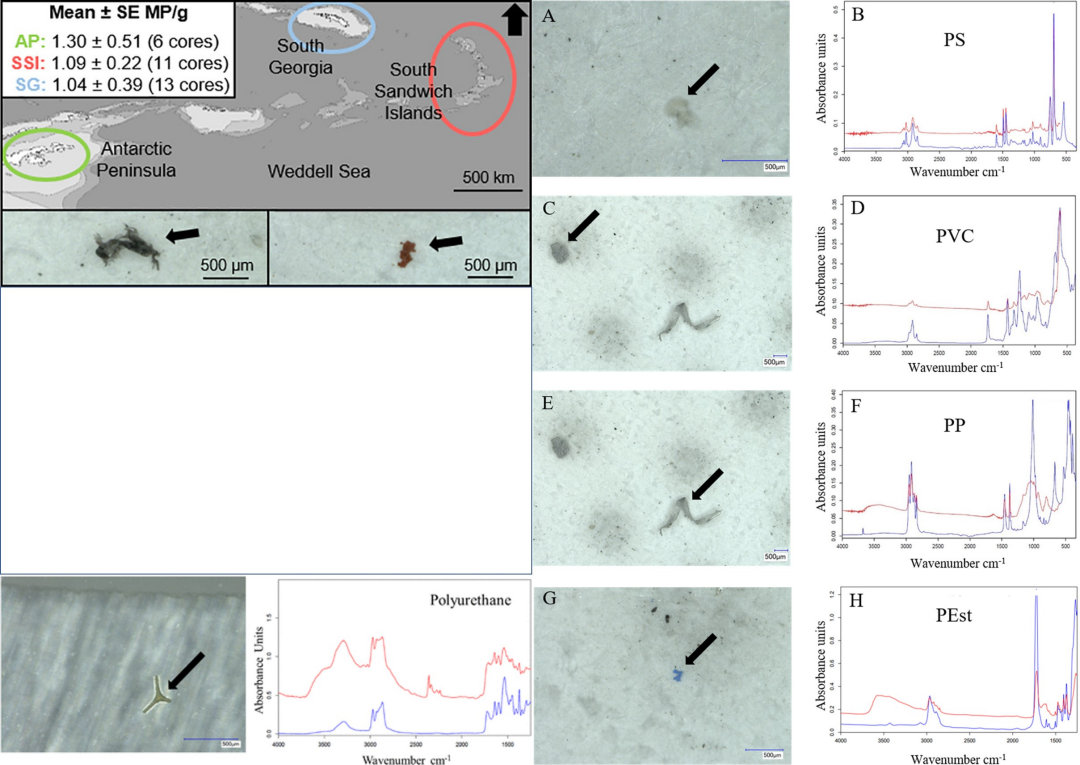
Plastic pollution is one of the biggest environmental problems on our planet after climate change. Thanks to careless and thoughtless handling, the really useful crude oil product can now be found everywhere as waste. It is even worse with so-called microplastics, i.e. tiny parts of plastic in the micrometer range. These particles have spread to all regions, especially the oceans, including the Southern Ocean. But the problem goes even deeper, as an international research group has now found out.
“We have been dumping plastic into our oceans for roughly 70 years now, so in hindsight this may not be terribly surprising.”
Eoghan Cunningham, study first author, Queen’s University
The group, led by first author and PhD student Eoghan Cunningham from Queen’s University in Belfast, found an average of 1.3 microplastic parts per gram of sediment in 28 of 30 soil samples from South Georgia, the South Sandwich Islands and the eastern side of the Antarctic Peninsula. These found particles consisted of fibres, fragments and particles of various forms of plastic: polyester, polypropylene and polystyrene. These plastic derivatives are often used as packaging material. Eoghan Cunningham, lead author and PhD student comments on the results: “We have been dumping plastic into our oceans for roughly 70 years now, so in hindsight this may not be terribly surprising.”

“Our research highlights that no matter how remote an ecosystem is, it will still show the artefacts of human influence.
Eoghan Cunningham, study first author, Queen’s University
The samples were taken over the course of two years on various research trips around South Georgia, the South Sandwich Islands and on the east side of the Antarctic Peninsula and had been taken from the top few centimeters of the soft sediment. These regions are actually far from any civilization and strong human influence. Only South Georgia receives regular visits from various vessels in the fields of tourism, fisheries and research. Nevertheless, the measured amounts of microplastic parts are comparable to coastal regions in the North Atlantic or the Mediterranean, as the scientists write in their work. This is a big surprise of this work, as these quantities have not been expected. “Our research highlights that no matter how remote an ecosystem is, it will still show the artefacts of human influence,” Cunningham continues.

“It would be interesting to know the sources of the different microplastic types that we found, and the role that ship traffic or research stations may play in their accumulation.”
Sonja Ehlers, German Federal Institute of Hydrology
Scientists can only speculate on where the microplastic parts come from. Ocean currents, winds, but also fishing and even vertical transport, i.e. food intake and then a dip into the depths, may have played a role. Co-author Sonja Ehlers from the German Federal Institute of Hydrology in Koblenz also says: “It would be interesting to know the sources of the different microplastic types that we found, and the role that ship traffic or research stations may play in their accumulation.” The importance of the results is shown by the fact that microplastics can accumulate in the food chain. Deep-living, filtering organisms such as starfish and sea cucumbers or anemones are now also at risk. According to Katrin Linse of the British Antarctic Survey, who was involved in the sampling, this work is the first to have detected microplastics in Antarctic seabeds. Similar studies have already been known for the Arctic, and all show how far human influence has now expanded.
Dr Michael Wenger, PolarJournal
More on the subject:





